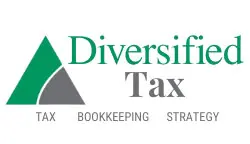Common Tax Breaks for Retirees: Maximizing Your Savings
Common Tax Breaks for Retirees
As retirees, it is crucial to take advantage of every available tax break to ensure that your hard-earned money is stretched as far as possible. With various types of retirement income being taxed differently, it’s important to pay close attention to your tax situation.
In this article, we will explore some of the most overlooked tax breaks for retirees over the age of 65. By understanding and utilizing these tax-saving opportunities, you can potentially maximize your savings and enjoy a more financially secure retirement.
Extra Standard Deduction for People Over 65
When you reach the age of 65, the IRS offers you an additional tax benefit in the form of an extra standard deduction. For the 2024 tax year, a single individual who is 64 years old can claim a standard deduction of $14,600. However, once you turn 65, the standard deduction increases to $16,450.
This extra $1,850 can make it more likely that you’ll take the standard deduction on your tax return, rather than itemizing. If you’re married and one or both spouses are 65 or older, you also qualify for a higher standard deduction.
IRA Contribution from a Spouse
Retirement doesn’t necessarily mean an end to contributing to an Individual Retirement Account (IRA). If you’re married and your spouse is still working, they can generally contribute up to $6,500 to a traditional or Roth IRA that you own. This contribution limit increased to $7,000 for the 2024 tax year. To be eligible for this tax benefit, your spouse must have enough earned income to fund the contribution to your account, as well as any deposits to their own IRA.
However, there is a limitation to keep in mind. If only one of you is age 50 or older, the total combined contributions to both IRAs cannot exceed $14,000 for the 2024 tax year. If both of you are at least 50 years old, the limit is $16,000 for 2024.
Medicare Premiums Tax Deduction
If you become self-employed after retiring, you can deduct the premiums you pay for Medicare Part B and Part D, as well as the cost of supplemental Medicare (Medigap) policies or a Medicare Advantage plan. This deduction is available whether or not you itemize your deductions.
However, you cannot claim this deduction if you’re eligible to be covered under an employer-subsidized health plan offered by either your employer or your spouse’s employer.
Tax Credit for Low-Income Older Adults
The tax credit for low-income older adults is available to individuals who meet specific criteria. To be eligible, you must either be age 65 or older at the end of the tax year or under age 65 and retired on permanent and total disability, receiving taxable disability income. The first income test is based on your adjusted gross income (AGI) and varies depending on your filing status. The IRS will calculate the credit amount for you if you’re eligible, which can potentially lower your tax bill.
Timing Tax Payments
Once you retire, you break out of the system where taxes are withheld from your paychecks. It becomes your responsibility to ensure that the IRS receives its due on time. To avoid tax penalties and interest, you have two options for paying your taxes on time: withholding and quarterly estimated tax payments. Withholding is not only for paychecks but also applies to regular payments from a 401(k) plan, company pension, and traditional IRA withdrawals.
You can choose to have taxes withheld from these payments to stretch your tax bill over the entire year. Alternatively, you can make quarterly estimated tax payments if you owe more than $1,000 in tax for the year, above and beyond what’s covered by withholding. This ensures that you don’t incur penalties for underpayment of taxes.
Avoid the Pension Payout Trap
When receiving payments from pensions, annuities, IRAs, and other retirement plans, it’s important to be aware of the pension payout trap. If you receive a lump-sum payment or other rollover distribution from a company plan and choose to roll it over into an IRA, the company must withhold a flat 20% for the IRS.
Even if you complete the rollover within the required sixty days, the IRS will still hold onto the 20% until you file a tax return and request a refund. To avoid this situation, it’s best to ask your employer to send the money directly to a rollover IRA, ensuring no withholding takes place. This allows you to have control over tax withholding when you eventually withdraw funds from the IRA.
The RMD Workaround
Required minimum distributions (RMDs) are mandatory for retirees with traditional IRAs. However, there is a potential workaround for meeting the pay-as-you-go demand of RMDs. If you don’t need the RMD to live on during the year, you can wait until December to take the money. By asking your IRA sponsor to hold back a large portion of the distribution to cover your estimated tax on both the RMD and your other taxable income, you can keep your cash in your IRA for most of the year and avoid the underpayment penalty. This strategy allows you to have greater control over your tax payments and potentially increase your savings.
Give Money to Charity
Once you reach the age of 70½, you can make tax-friendly charitable donations even if you don’t itemize your deductions. This is possible through a qualified charitable distribution (QCD). With a QCD, you can transfer up to $100,000 each year from your traditional IRAs directly to charity.
If you’re married, your spouse can transfer an additional $100,000 from their IRAs. The transfer is excluded from taxable income and counts toward your required minimum distribution. This allows you to support charitable causes while potentially reducing your tax liability.
Give Money to Your Family
The federal estate tax is not a concern for most Americans due to the IRS lifetime gift tax exclusion. This exclusion allows you to pass on up to $13.61 million to your heirs for the 2024
tax year without being subject to estate tax. If the estate tax may be a consideration in your future, taking advantage of the annual gift tax exclusion can be beneficial.
This rule permits you to give a specified amount annually to any number of people without worrying about the gift tax. By utilizing this tax-free gift option, you can transfer wealth to your family while potentially reducing your taxable estate.
Tax-Free Profit from a Vacation Home
To qualify for tax-free profit from the sale of a home, it must be your principal residence for at least two of the five years leading up to the sale. However, there is a way to potentially capture tax-free profit from the sale of a former vacation home. If you sell your primary residence and move into a vacation home that you’ve owned for a significant period, you can make that vacation home your new principal residence for at least two years.
This allows you to allocate a portion of the profit from the sale of the vacation home as tax-free, as long as it is based on the time it was not used as your principal residence after 2008. By strategically managing your properties and understanding the tax implications, you can potentially maximize your tax savings.
Stay Informed and Seek Professional Advice
As tax laws and regulations change over time, it’s important for retirees to stay informed about potential tax breaks and seek professional advice when necessary. A qualified tax professional can help you navigate the complexities of the tax code and identify personalized strategies to minimize your tax liability. With their expertise, you can ensure that you are taking full advantage of all available tax breaks and making informed decisions regarding your retirement finances.
Plan Ahead and Optimize Your Retirement Strategy
To make the most of tax breaks for retirees, it’s essential to plan ahead and optimize your overall retirement strategy. This includes considering factors such as the timing of withdrawals from retirement accounts, managing taxable and tax-deferred income sources, and strategically planning charitable contributions.
By taking a proactive approach to your retirement finances and seeking professional guidance, you can develop a comprehensive strategy that maximizes your tax savings and supports your long-term financial goals.
In conclusion, as a retiree, it is crucial to be aware of the various tax breaks available to you. By understanding and utilizing these tax-saving opportunities, you can potentially maximize your savings and ensure a more financially secure retirement.
However, it’s important to stay informed about changes in tax laws and seek professional advice when necessary. By planning ahead and optimizing your retirement strategy, you can make the most of the tax breaks for retirees and enjoy a comfortable and financially stable retirement.




